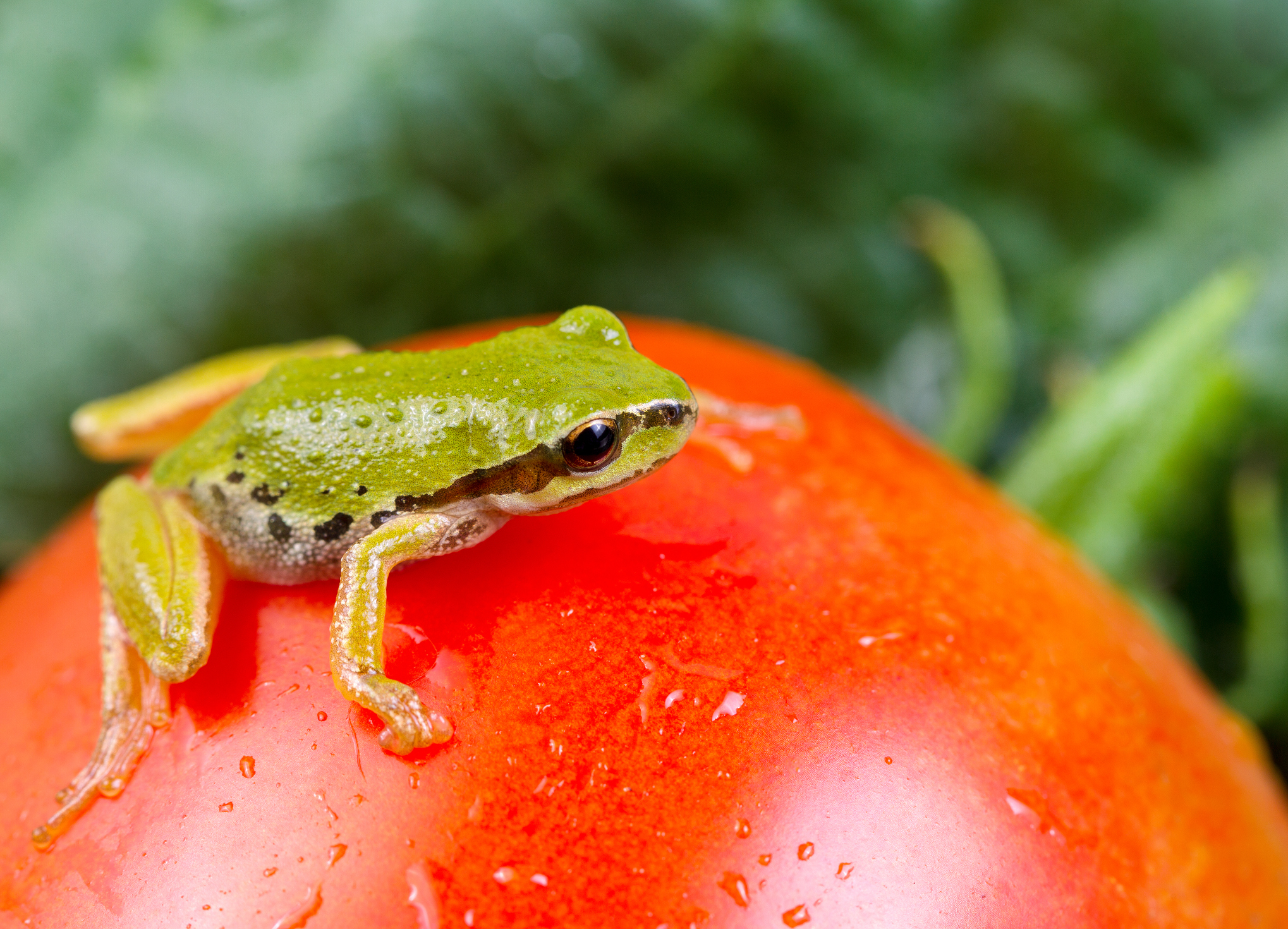Your Bagged Salad Is Full of Frogs

Credit to Author: Jelisa Castrodale| Date: Wed, 24 Jul 2019 11:49:38 +0000
In the summer of 2017, a California woman was about to take the first bite of her salad, when she realized that a tiny frog was hanging out in her bowl of spring mix. She immediately ran to the bathroom and threw up.
Becky Garfinkel told the Los Angeles Times that she bought the bagged salad mix from Target and after she shared the incident on social media, the store offered her a $5 gift card. As for the frog, Garfinkel’s husband rinsed the salad dressing off its tiny body and gave it a reassuring massage. Instead of releasing him (or her) into their yard, they created a frog-friendly terrarium, bought some takeout crickets, and set him up in his new home. They even named him Lucky, because what else would you call a frog who narrowly escaped the business end of a salad fork?
Garfinkel’s frog is included in a new study published by a University of Illinois postdoctoral researcher, a first-of-its kind analysis of the number of vertebrates—live, dead, or, um, in pieces—that have been found in fresh, bagged, or canned produce in the past 15 years. Lead author Daniel Hughes says that there have been reports of at least 40 such incidents since 2003. Thirty of those incidents involved amphibians and reptiles, but six rodents, three birds, and one Brazilian Free-tailed Bat have also been discovered in those assorted forms of produce.
“I started looking out of curiosity, saving links to articles of people finding frogs in their salads. Within a couple months, I had this long list. I realized there’s something more going on here than we’ve been led to believe,” Hughes said. “Every article I clicked on claimed it was super rare, but when you’re looking at 25 of those incidents, it doesn’t sound that rare to me.”
The earliest reported incident that Hughes found involved a shopper who found “the head of a lizard” in a bag of romaine lettuce, while the most recent occurred last August, when a Washington, D.C. woman spotted a frog in the takeout salad she’d gotten from a Mediterranean restaurant. He also catalogued Known Salad Vertebrates (our terminology, not his) in 20 states, while Texas and Florida both reported five incidents each. Customers were also more likely to find these uninvited dinner guests in conventionally grown produce than they were in organic varieties.
“It was implied over and over in these articles: if you buy organic, getting a frog is par for the course, essentially,” Hughes said. “If that was true, we should have seen the opposite of what we found. We did not take into account market-share differences between conventional and organic produce, but this result ran contrary to common opinion.”
As for how the frogs get into plastic bags of salad, or cans of green beans or whatever, Hughes isn’t quite sure yet, but he suggests that it could be a combination of the conversion of previously ‘wild’ land into agricultural land, the increased use of automated farming methods, or the all-around industrialization of food production.
“From a wildlife perspective, it’s really hard to screen for animals in the context of industrial-scale harvest speed and volume,” he said. “You’d have to spend minutes checking each plant. Romaine, for example, is lettuce folded on lettuce, where it’s easy for moisture-seeking frogs to hide. From a business perspective, can you really spend minutes to check each leaf?”
But if you do empty a bag of spring mix into a serving bowl, and realize that a frog is sitting there staring back at you, he suggests either doing what Becky Garfinkel did and keeping it as a pet, or giving it to a school to study in their science classes. “Releasing wild animals is how invasive species start, and could introduce disease into local frog populations,” he said. “Just don’t do it.”
Who knows—maybe the retailer will give you enough gift cards to buy a terrarium.
This article originally appeared on VICE US.